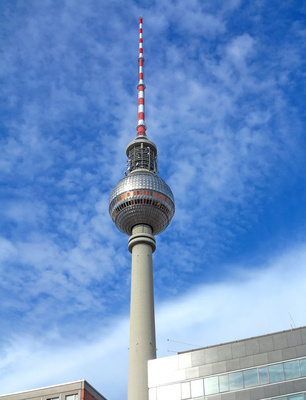Broadcasting transmitters (radio and television)
Broadcasting, different to mobile communication, works with a significantly lower number of transmitters, which have high transmitting power of up to several million watts. These cover a radius of up to some 100 kilometers and more. Nowadays, the transmitters are mainly used for broadcasting analog radio (short wave, AM, and FM radio), digital television (Digital Video Broadcasting-Terrestrial) and digital radio (Digital Audio Broadcasting).
In Germany, analog television broadcasting and reception were discontinued at the end of 2000 and completely replaced by (analog and digital) cable TV, as well as DVB-T and digital satellite TV. Digital technology requires less transmission power compared to analog for the same reception quality. However, more transmitter sites are required for full coverage. Information about the impact in relation to the exposure of the population is provided by the report of a research project, which was carried out within the framework of the German Mobile Telecommunication Research Programme.
The safety distances of the most powerful broadcasting transmitters are in some cases several hundred meters on the ground. However, due to the installation of the antennas on high masts or TV towers, the horizontal safety distance is often smaller, because the vertical distance of the antenna to the ground must be taken into account. Generally, the stations broadcast horizontally in all directions. In vertical direction, as in the case of mobile base stations, the fields are focused and lightly directed to the ground.
Information about typical field strengths of broadcasting transmitters are provided in the exposure source database.

source: Guenter Harnich / pixelio